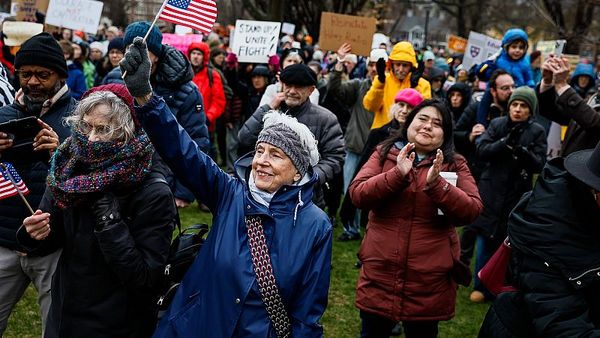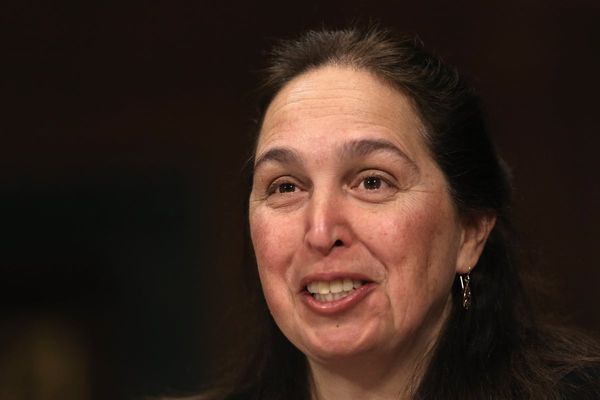
This week, for the first time, the Reserve Bank acknowledged that inflation has been partly caused by the behaviour of companies.
In Tuesday’s minutes of the meeting of the RBA board on June 6, was this sentence: “… members observed that some firms were indexing their prices, either implicitly or directly, to past inflation.”
It came in the same paragraph as another grizzle about productivity, which “over recent times had been disappointing”.
Higher input prices, low productivity and price gouging are the three causes of the recent burst of high inflation – it isn’t excessive wage growth.
The pandemic led to supply-chain problems, but they are now over; a collapse in productivity is the reason unit labour costs are rising too much; and profit margins are expanding on top of that.
Profit margins boost inflation
Research from the Australia Institute shows that 69 per cent of excess inflation (above the Reserve Bank’s 2.5 per cent target) since end-2019 arose from higher corporate profit margins, while only 18 per cent was due to labour costs.
Yet the Reserve Bank directs its attention to wages, which are not the problem, and specifically to increasing unemployment to 4.5 per cent – that is, putting 140,000 more people out of work – in order to suppress them.
Why? Because the Reserve Bank is the only government agency with the job of dealing with inflation, and its only tool is interest rates, with which it regulates aggregate demand and thereby, indirectly, employment, which in turn indirectly regulates wages.
God forbid someone should just tell companies to stop it.
Well, they tried – there is a long and futile history in Australia of federal attempts to control prices.
Failed history of price controls
In 1948, then-prime minister Ben Chifley proposed a referendum to give the Commonwealth the power to make laws about prices and rents, saying: “Rising prices threaten the value of wages or salaries, and of savings, and undermine the stability of the economy”, and “the government can be relied on to administer price control sanely”.
Nope, said Australia, and the referendum lost, badly.
In 1965, Bob Menzies’ attorney-general Garfield Barwick brought in the first Trade Practices Act, which included some ability to control prices, but it was limited to instances of “monopolisation”, and since it used the corporations power in the Constitution, it didn’t apply to unincorporated firms.

In 1973, Gough Whitlam had another crack at a referendum, and it’s worth quoting a few bits of his second reading speech introducing the bill: “Controls over prices are not a cure-all for inflation, but they can be used responsibly and selectively as one of the elements in an anti-inflationary strategy. They are no panacea, but an essential part of the treatment.
“All our experience from 1948 – political as well as economic shows that the states together or separately cannot apply effective price control, even were they willing to do so.
“The effectiveness of the industrial arbitration system itself will be increased if those who have to operate within it know that there is a reserve power, with a government willing to exercise that power, to prevent their hard-won increases being filched by unjustified price rises resulting in unfair profiteering.”
Quite so, but that referendum also lost, although not quite as badly as Chifley’s, even though Whitlam didn’t promise to control prices “sanely”.
Whitlam’s solution
Not to be deterred, Whitlam created the Prices Justification Tribunal (PJT), with which Australia joined a growing group of western countries in the 1970s trying to bring inflation down by directly controlling prices.
The new law required firms with turnover of more than $20 million (about $140 million in today’s money) to pre-notify of intended price increases, and wait to be told by the PJT whether they could.
Delay was thus the tribunal’s weapon, and it worked pretty well, although there had to be recessions in 1974 and 1982 to bring inflation down, so not all that well.
The PJT was abolished in July 1983 by the Hawke government when it introduced the Prices Surveillance Act as part of the first Prices and Incomes Accord with the ACTU.
Accord about capping wages
The accord was really all about capping wages, with price control as a sop to the unions. The Prices Surveillance Authority (PSA) created by the act was initially headed by Hilda Rolfe from the Productivity Commission. It wasn’t what you’d call ferocious.
In 1989, a 47-year-old economist and lawyer named Allan Fels was put in charge of the PSA. In 1991 he replaced Bob Baxt as chairman of the Trade Practices Commission (TPC) as well, and in 1995 the National Competition Policy reforms led to the merging of the PSA and the TPC into the Australian Competition and Consumer Commission (ACCC), also headed by Allan Fels.
In 2001, the Howard government asked the Productivity Commission to review the Prices Surveillance Act 1983, knowing it would recommend it should be repealed, which it did, and it was.
But in the meantime, Allan Fels had become a force of nature – a price control referendum in human form.
Specifically, he learnt how to use the media.
Armed with an instruction from John Howard to catch companies using the introduction of the GST as a cover for profiteering, he repeatedly used publicity in preference to his limited enforcement powers to name and shame firms he caught increasing prices more than the change in sales taxes required.
Nemesis of corporate Australia
Researching prices, and understanding how various markets worked so price gouging could be detected, took a lot of resources, but calling out the transgressions was blindingly successful because no company wants to be exposed as a price-gouger. Fels became the nemesis of corporate Australia.
So now we have inflation again, once again threatening recession, and once again the problem has a lot to do with the lack of any controls over the prices companies charge, as implied by the RBA in this week’s minutes.
But there is zero chance of another referendum about prices, or a new Prices Justification Tribunal on top of the ACCC. By the way, the ACCC does not control prices, and is only concerned with false and misleading statements about them.
ACCC’s advice
There is a page on the ACCC website headed: Setting prices: What’s allowed, which goes to say that “if consumers or businesses think the prices another business is charging are too high, they can consider alternative suppliers, or consider not purchasing the product or service at all …”
Right. In other words, nobody is watching, or worrying about prices, except the Reserve Bank, which is trying to control them by making people unemployed.
It’s time to revisit the Fels system of price control.
That is – put some resources into price surveillance, and name and shame the gougers. It’ll work.
Alan Kohler is founder of Eureka Report and finance presenter on ABC news. He writes twice a week for The New Daily







